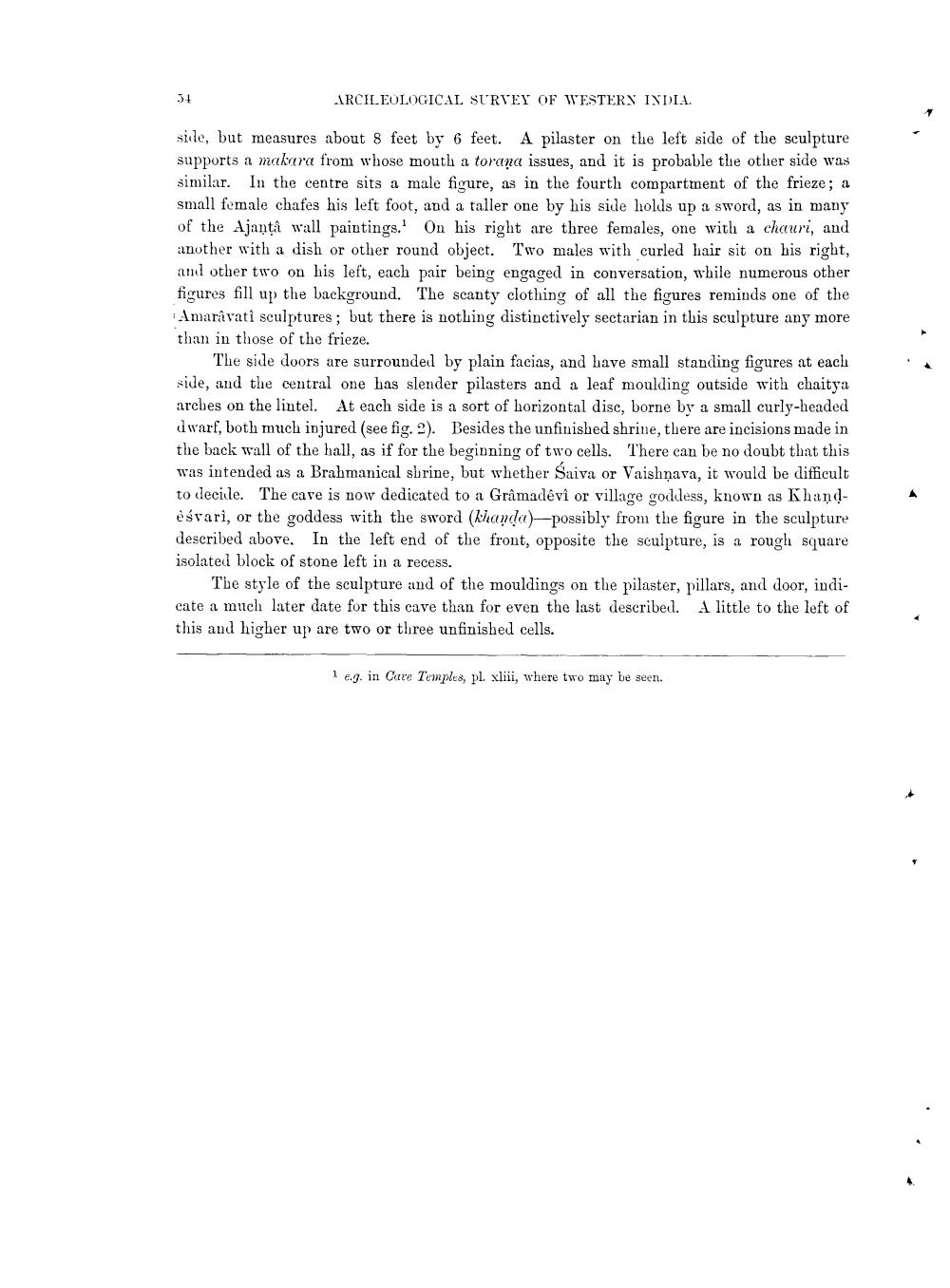________________
34
ARCHEOLOGICAL SURVEY OF WESTERN INDIA.
side, but measures about 8 feet by 6 feet. A pilaster on the left side of the sculpture supports a makara from whose mouth a torana issues, and it is probable the other side was similar. In the centre sits a male figure, as in the fourth compartment of the frieze; a small female chafes his left foot, and a taller one by his side holds up a sword, as in many of the Ajanta wall paintings. On his right are three females, one with a chauri, and another with a dish or other round object. Two males with curled hair sit on his right, and other two on his left, each pair being engaged in conversation, while numerous other figures fill up the background. The scanty clothing of all the figures reminds one of the Amaravati sculptures; but there is nothing distinctively sectarian in this sculpture any more than in those of the frieze.
The side doors are surrounded by plain facias, and have small standing figures at each side, and the central one has slender pilasters and a leaf moulding outside with chaitya arches on the lintel. At each side is a sort of horizontal disc, borne by a small curly-headed dwarf, both much injured (see fig. 2). Besides the unfinished shrine, there are incisions made in the back wall of the hall, as if for the beginning of two cells. There can be no doubt that this was intended as a Brahmanical shrine, but whether Śaiva or Vaishnava, it would be difficult to decide. The cave is now dedicated to a Grâmadêvî or village goddess, known as Khandéévari, or the goddess with the sword (khayda)-possibly from the figure in the sculpture described above. In the left end of the front, opposite the sculpture, is a rough square isolated block of stone left in a recess.
The style of the sculpture and of the mouldings on the pilaster, pillars, and door, indicate a much later date for this cave than for even the last described. A little to the left of this and higher up are two or three unfinished cells.
1 e.g. in Care Temples, pl. xliii, where two may be seen.




